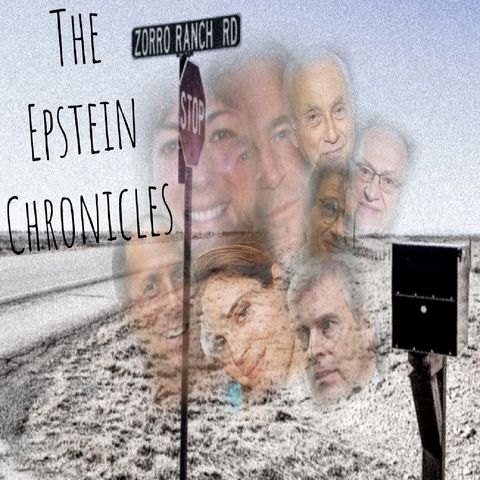Explicit
A Look Back: How Weapons Meant For Ukraine End Up In The Hands Of Criminal Groups

Oct 22, 2023 ·
11m 50s
The Mexican cartels' trade of drugs for weapons is a complex and illicit network that involves the exchange of narcotics, primarily cocaine, marijuana, and methamphetamine, for firearms and ammunition. The...
show more
The Mexican cartels' trade of drugs for weapons is a complex and illicit network that involves the exchange of narcotics, primarily cocaine, marijuana, and methamphetamine, for firearms and ammunition. The process typically follows a multi-step pattern:
In this episode, we examine the response by the AP to a story claiming that the cartels in Mexico have a pipeline to illegal arms, including ones earmarked for the theater in Ukraine. As usual, the fact checkers are well...not exactly factual.
(commercial at 7:21)
to contact me:
bobbycapucci@protonmail.com
source:
Mistranslated news report sparks baseless claim about Mexican cartel getting weapon from Ukraine | AP News
show less
- Drug Production: Mexican cartels have established extensive drug production and trafficking operations within the country. They cultivate and process drugs like marijuana and opium poppies, which are used to manufacture cocaine and heroin, respectively. Methamphetamine production has also increased significantly in recent years.
- Drug Transportation: Once the drugs are produced, cartels employ various methods to transport them across the border into the United States. These methods include the use of underground tunnels, hidden compartments in vehicles, boats, and even human couriers, known as "mules."
- Drug Distribution: In the United States, the Mexican cartels have established vast distribution networks, involving multiple tiers of individuals involved in the trade. These networks supply drugs to local gangs and distributors, who then distribute the narcotics further down the line.
- Accumulating Weapons: Cartels need weapons to protect their drug operations and maintain control over their territories. Firearms are acquired through various means, including purchases from arms dealers in Central America, illicit arms markets, and smuggling operations. Some weapons are also stolen from legitimate sources, such as law enforcement agencies or the military.
- Trade Negotiations: Mexican cartels establish connections with international arms dealers, intermediary groups, or corrupt individuals who can facilitate the trade of drugs for weapons. These negotiations may involve direct contact between cartel representatives and arms dealers, or they may rely on intermediaries to coordinate the exchange.
- Exchange Process: Once an agreement is reached, the trade takes place at a prearranged location. The cartels typically transport drugs to the designated location, where they hand over the narcotics to the arms dealers or intermediaries. In return, they receive weapons, ammunition, and other related equipment.
- Smuggling Weapons: After acquiring the weapons, the cartels smuggle them back into Mexico, often using similar methods employed for drug trafficking. These may include hidden compartments in vehicles, underground tunnels, or human couriers.
- Weapon Utilization: The acquired firearms are then used by the cartels for various purposes, including protection against rival cartels, confrontations with law enforcement agencies, and maintaining control over their illicit activities. The weapons also serve to intimidate and enforce their authority within the territories they operate.
In this episode, we examine the response by the AP to a story claiming that the cartels in Mexico have a pipeline to illegal arms, including ones earmarked for the theater in Ukraine. As usual, the fact checkers are well...not exactly factual.
(commercial at 7:21)
to contact me:
bobbycapucci@protonmail.com
source:
Mistranslated news report sparks baseless claim about Mexican cartel getting weapon from Ukraine | AP News
Information
| Author | Bobby Capucci |
| Website | - |
| Tags |
Copyright 2024 - Spreaker Inc. an iHeartMedia Company
